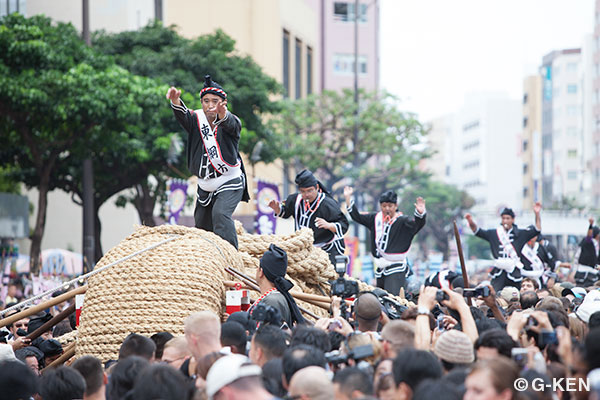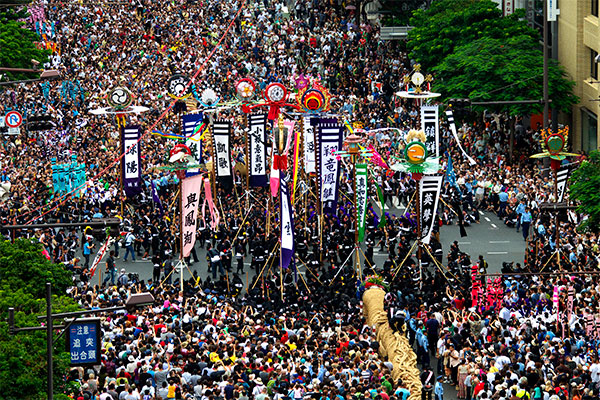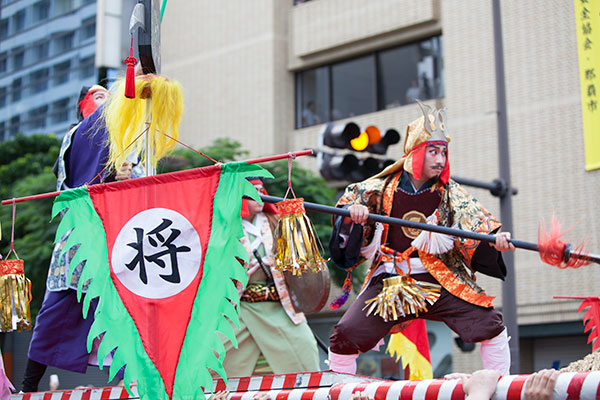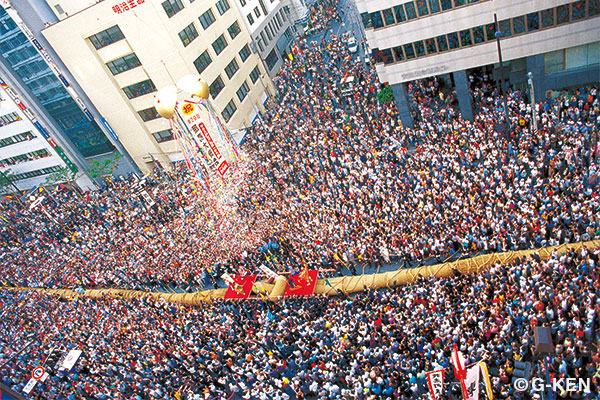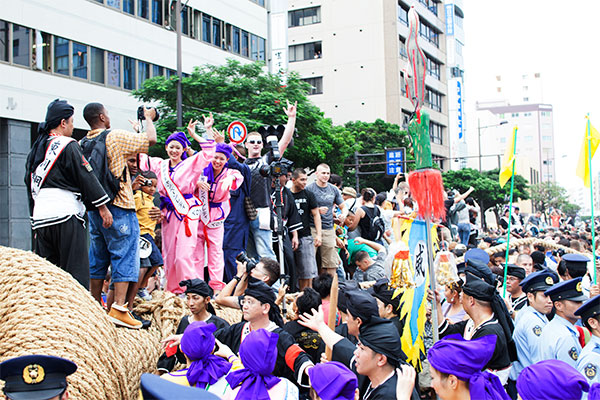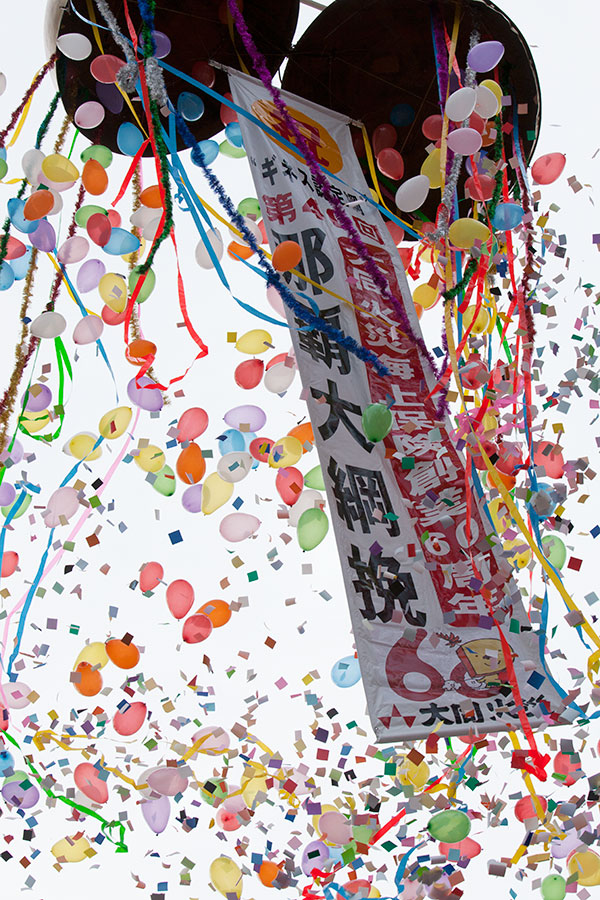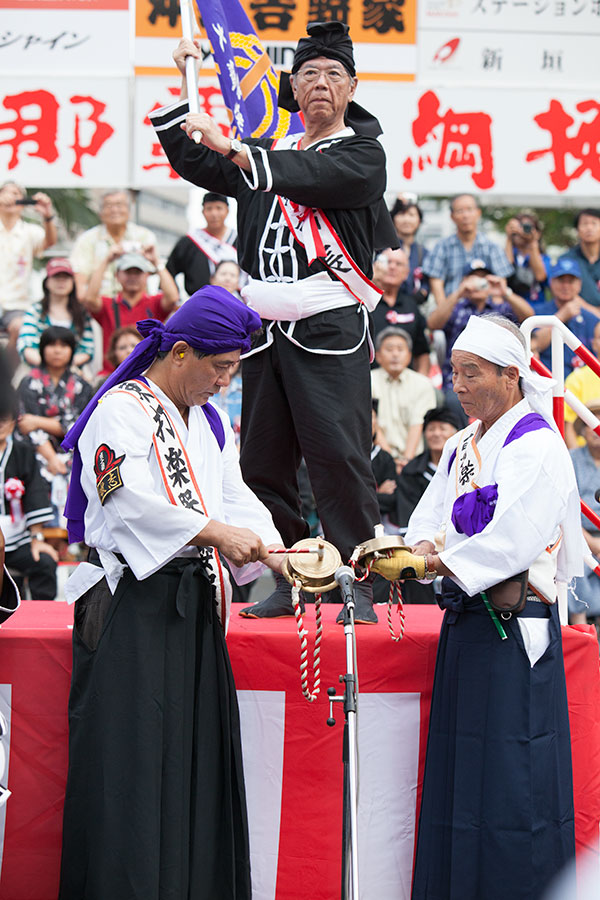The Naha Great Tug-of-War Festival
Report: the Naha Great Tug-of-War Festival
The Naha Great Tug-of-War Festival is now just one month away.
Tugs-of-war were held throughout the island as thanksgiving for an abundant harvest and a prayer for rain. With a history of 560 years, the Naha Great Tug-of-War, which developed as a national festivity of the Ryukyu Kingdom, is one of Naha’s major and most highly anticipated events on the island. The tug-of-war takes place every October, and on the day of the event all of Naha is excited, and a festive atmosphere pervades the city from the morning till evening.
The lively call of "saa' saa', saa' saa'” echoes across the area, and the sound of firecrackers adds to the lively atmosphere of the festival. The hatagashira (banner) performance is watched by crowds caught up with the excitement of the festival. This skillful display is an essential part of the Naha Great Tug-Of-War in which hatamochi (hatagashira bearers) display their technique of handling banners. On this day, hatamochi from 14 districts of Naha are gathered. For two-and-a-half hours teams divided into east and west march from Makishi Park and the Tsuboya Elementary School to the Okinawa Prefectural Office, all the way demonstrating their talent with the hatagashira. The excited calls of the crowd cheering them on fill the air with electricity. The performance presented here today is the fruit of their tireless practice every day and their passion for the event, and the excitement of the festival escalates as the time for the tug-of-war approaches.
To win, the center of the rope must be pulled over both sides of the victory line, drawn five meters from the center. If the distance pulled is less than three meters, the contest is considered a draw. A tug-of-war usually takes 20-30 minutes, but it ended quickly in 2008, taking only five minutes, 56 seconds.
Between 15:00-19:00, that part of Highway 58 near the tug-of war venue is closed. On this one day of the year you can see a huge kusudama (paper ball with colorful streamers) erected in the middle of the road between the east (airport) and west (Tomari) sides. As a matter of interest, only here can the median strip of a Japanese road be removed for a particular event, facilitating the Okinawans’ desire to continue holding this tug-of-war in its traditional venue. With the end of the parade at a little past 15:00, the east and west teams gather at the site and line up for the opening ceremony of the Naha Great Tug-of-War. The shouts of the energized audience mingle with the sound of small drums called paarankuu. You can feel the tension of both teams waiting for the signal to start, while the mezuna (female rope) of the west team and the ozuna (male rope) of the east are connected with a huge stick called a kanuchi-bou, weighing 365 kilograms. The competition is about to begin.
This giant rope used for the match measures 200 meters in length, weighs 40 tons and was listed in the Guinness World Records as the world’s largest rice straw rope used in a tug-of-war for 10 years, from 1995-2005. The event site is filled with the feverish excitement of the audience, men and women of all ages, from local Okinawans and resident foreigners to tourists. At 16:20, the mayor of Naha City, also the chief judge of the event, gives the signal to start, saying, “Pull happiness to you!” The match finally begins, and loud calls of “haaiya’, haaiya’” resound in the air. It is simply a splendid sight to witness 275,000 people gathered in this one place, with 15,000 of them pulling the rope, and you can't help but get caught up in the entire spectacle.
After the contest, the festival site moves to Onoyama Park near Naha Airport. With a stein of local favorite Orion Beer in hand, people stroll around the park and enjoy food and live entertainment. This genuine Okinawan beer is a perfect way to refresh your body after the excitement of the tug-of-war. Regardless of age or nationality, this is an event everybody can participate in and feel to be a part of the whole. The tug-of-war embodies the soul of Okinawa.
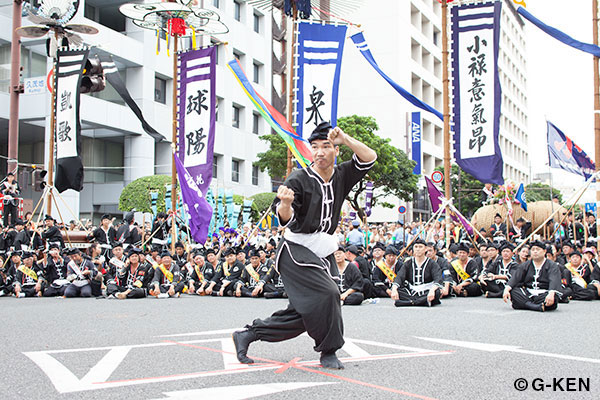 Hatagashira and karate performances are staged before the tug-of-war.
Hatagashira and karate performances are staged before the tug-of-war.
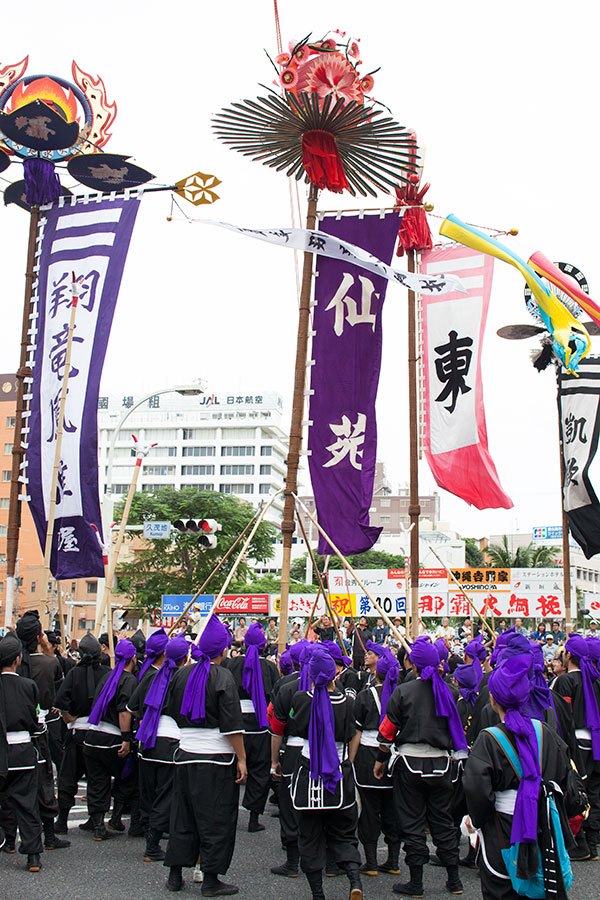 The hatagashira parade on Naha’s main boulevard, Kokusai Street, before the tug-of-war. Traditional performing arts are also demonstrated.
The hatagashira parade on Naha’s main boulevard, Kokusai Street, before the tug-of-war. Traditional performing arts are also demonstrated.
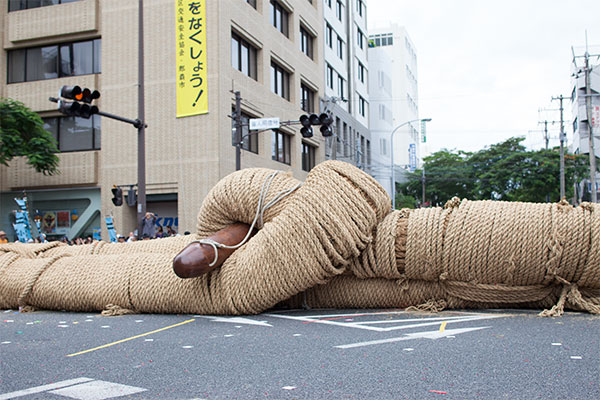
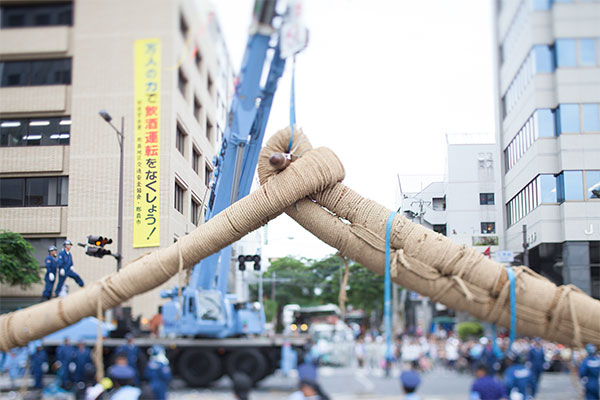 Before the start of the tug-of-war, ropes called ozuna (male rope) and mezuna (female rope) are tied together as one giant rope. Its size is simply amazing.
Before the start of the tug-of-war, ropes called ozuna (male rope) and mezuna (female rope) are tied together as one giant rope. Its size is simply amazing.
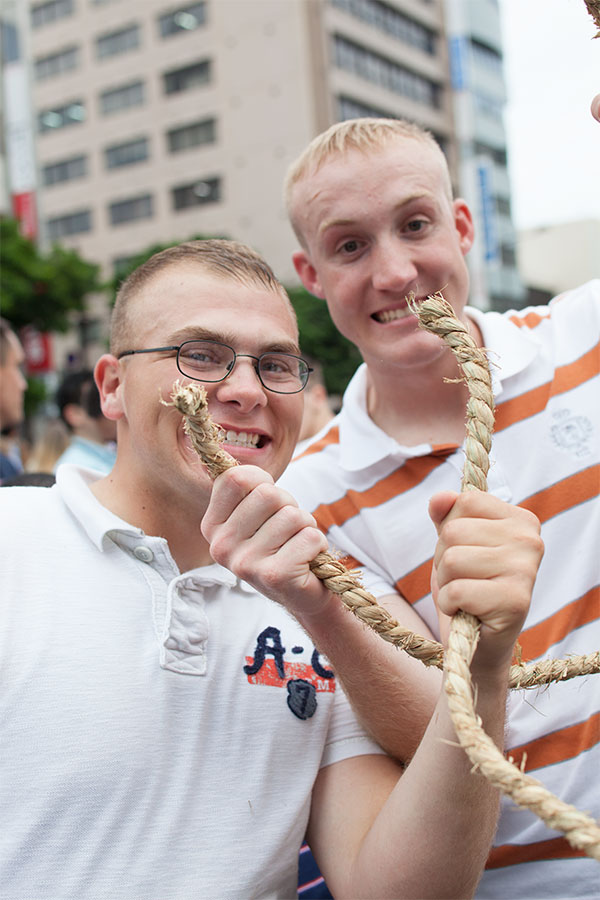
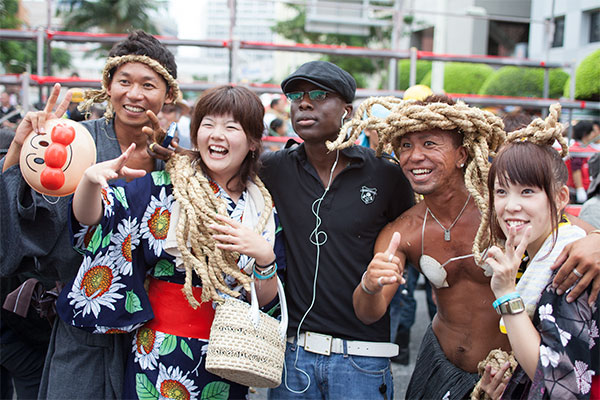 Seen in the hands of participants are pieces of the giant rope, considered good luck and available to take home as a keepsake.
Seen in the hands of participants are pieces of the giant rope, considered good luck and available to take home as a keepsake.
- Date: Saturday, Oct. 11-Monday, Oct. 13, 2014
- *The Naha Great Tug-of-War is the highlight of the three-day-long Naha Great Tug-of-War Festival and takes place on the second day of the festival.
Time: 11:00-20:30
Place: Onoyama General Athletic Park and Kokusai Street - Admission: Free
















